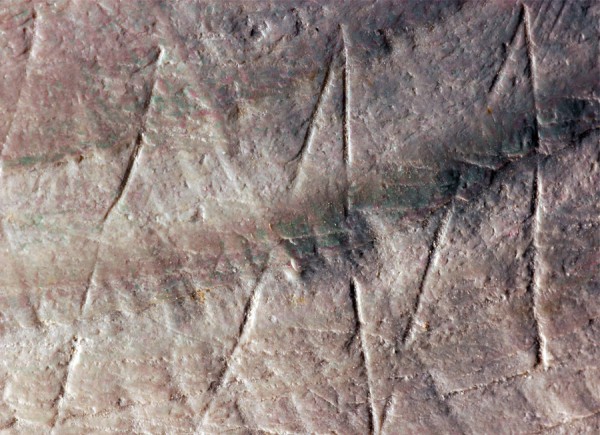Art World
Were Homo Erectus into Abstract Art?


Zoe Li

A new discovery sheds an entirely new light on the way we understand the homo erectus’ psyche: the faint zig-zag markings, identified on shells found in Indonesia, prove that the ancestor of the modern human was capable of abstract markings.
The shells were unearthed from a riverbank in Java, Indonesia, in the 1890s by Dutch paleoanthropologist Eugène Dubois. But wasn’t until recent years that archaeologists took a closer look at the fossils using modern photography.
That’s when shallow etchings of a zig-zag pattern on the surface of the shells were discovered by Josephine Joordens and her team at Leiden University in the Netherlands. The findings were published in Nature journal on Wednesday.
The shells date to between 430,000 and 540,000 years old, and they show that the ability to think abstractly and conceive symbols was not a unique trait of homo sapiens.

Photo via: Henk Caspers/Naturalis
Up until now, the earliest evidence of geometric art was found carved into rocks in South African caves. These date back to 70,000 to 100,000 years ago.
However, Joordens is undecided about whether or not the newly discovered markings can be called art. “If you don’t know the intention of the person who made it it’s impossible to call it art,” she told Nature. “But on the other hand, it is an ancient drawing. It is a way of expressing yourself. What was meant by the person who did this, we simply don’t know, ”
She says that if the marking were made by an homo sapiens then it would easily be called early art (see “World’s Oldest Artwork Discovered in Indonesia“).